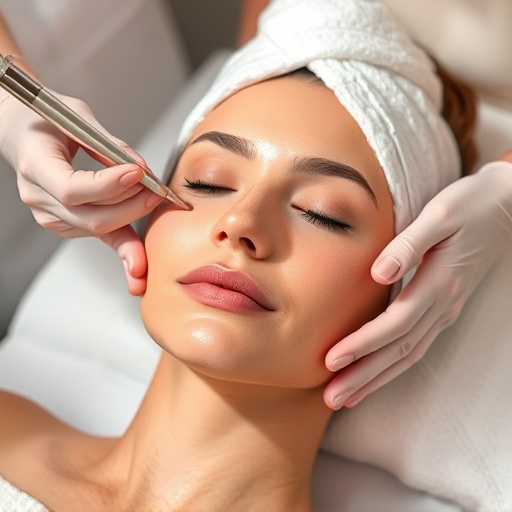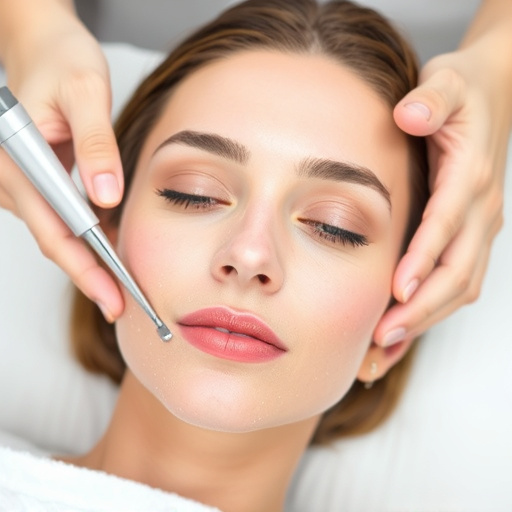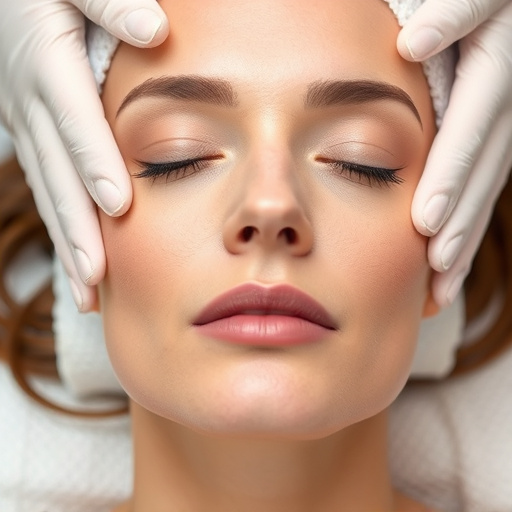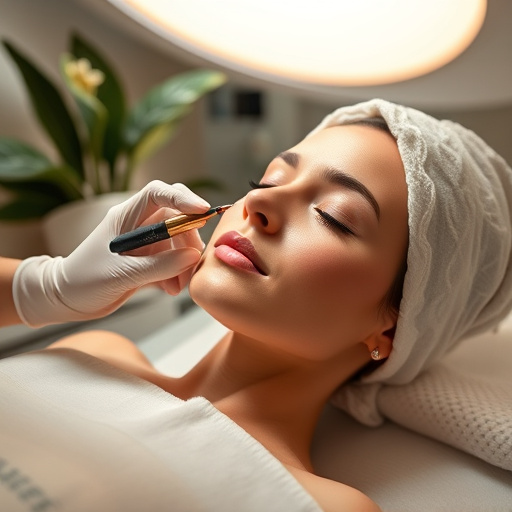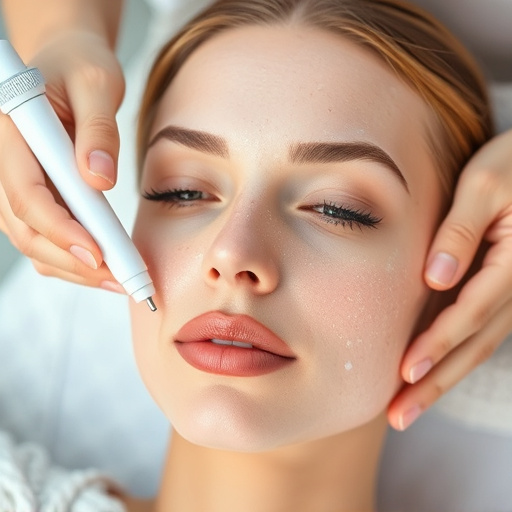Sun exposure causes photoaging and skin damage, including wrinkles, age spots, and collagen breakdown. Anti-aging therapies, procedures, and specialized facials can restore texture, reduce wrinkles, and prevent scarring. Consistent sun damage treatment maintains long-term healthy skin by targeting hyperpigmentation and enhancing repair. Prevent future damage with SPF 30 sunscreen, antioxidant products, and tailored treatments like chemical peels or retinoids. Always consult a dermatologist for personalized sun damage treatment.
Understanding the long-term effects of sun damage on skin is crucial for maintaining its health and vitality. This article explores key aspects, including recognizing subtle signs of chronic exposure, promoting skin repair mechanisms, and preventing further deterioration. By delving into these topics, we aim to equip readers with knowledge on effective sun damage treatment options, empowering them to take proactive measures for healthier, more radiant skin.
- Recognizing Signs of Long-Term Sun Damage
- Skin Repair and Regeneration After Sun Exposure
- Preventing Future Sun Damage: Effective Treatments
Recognizing Signs of Long-Term Sun Damage
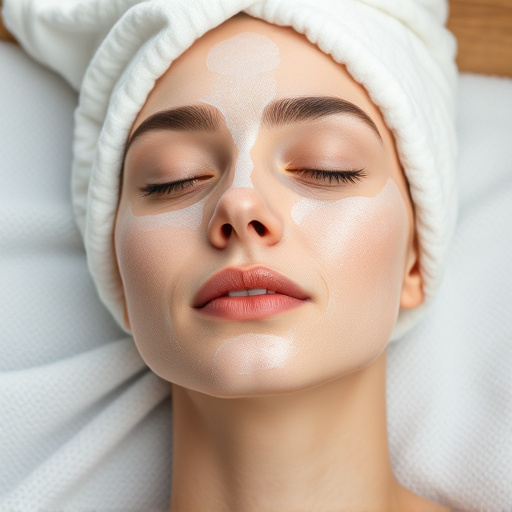
Over time, the skin’s cumulative exposure to UV rays can result in noticeable changes, indicating long-term sun damage. One of the most visible signs is photoaging, characterized by wrinkles, fine lines, and a leathery texture. These age spots, often appearing as hyperpigmented patches, are another common indicator. In addition to these surface-level changes, deeper issues may arise, such as collagen breakdown, leading to loss of skin elasticity and a saggy appearance.
Recognizing these signs is crucial for initiating sun damage treatment. Anti-aging treatments like retinoids, chemical peels, or laser therapy can help restore skin texture and reduce wrinkles. For those concerned with skin tightening, certain procedures including microdermabrasion or Botox injections may prove effective. Moreover, addressing existing acne issues through targeted treatments can prevent further scarring, ensuring a more youthful complexion.
Skin Repair and Regeneration After Sun Exposure

After prolonged or intense sun exposure, the skin goes through a natural repair and regeneration process. This is where the body’s defense mechanisms kick in to heal the damage caused by UV rays. The initial response is often an inflammatory reaction, leading to redness, swelling, and sometimes pain—a sign that the skin is working to protect itself. Over time, the skin initiates a complex series of cellular activities to replace damaged cells with new ones, promoting collagen production and skin rejuvenation. This process involves several key players, including fibroblasts, keratinocytes, and melanocytes, each contributing to the repair and eventual restoration of the skin’s barrier.
While the body’s natural healing abilities are remarkable, consistent sun damage treatment is essential for maintaining healthy skin in the long term. Customized facials and medical spa services offering advanced treatments can enhance this process by providing targeted care. These specialized therapies often include ingredients like vitamin C, retinoids, and alpha hydroxy acids to stimulate collagen synthesis, reduce hyperpigmentation, and support overall skin repair, ensuring that your skin not only recovers from sun damage but also regains its radiant, youthful appearance.
Preventing Future Sun Damage: Effective Treatments

Preventing future sun damage is key to maintaining healthy skin. Regularly using broad-spectrum sunscreen with at least SPF 30 is non-negotiable, ensuring it’s applied generously and reapplied every two hours, especially during peak sunlight hours. Beyond sunscreen, incorporating antioxidant-rich products into your skincare routine can help protect against UV-induced free radical damage. Customized facials designed to target specific sun damage concerns, such as pigmentation or texture, offer a deep cleansing and rejuvenating experience that goes beyond surface-level care.
Additionally, treatments focusing on skin brightening can help minimize the appearance of existing sun damage. These may include professional chemical peels, laser therapy, or advanced topical treatments containing ingredients like vitamin C, niacinamide, or retinoids. While these treatments offer effective sun damage treatment options, it’s crucial to consult with a dermatologist to determine the best course of action for your unique skin type and needs.
Understanding the long-term effects of sun damage is crucial for maintaining healthy skin. By recognizing signs of chronic exposure, such as wrinkles, pigmentation changes, and loss of elasticity, we can take proactive measures. Effective sun damage treatment options, including topical antioxidants, retinoids, and protective clothing, promote skin repair and regeneration while mitigating future harm. Preventing sun damage through consistent sunscreen use, avoiding peak UV hours, and seeking shade is key to preserving your skin’s youthful appearance and overall health.








